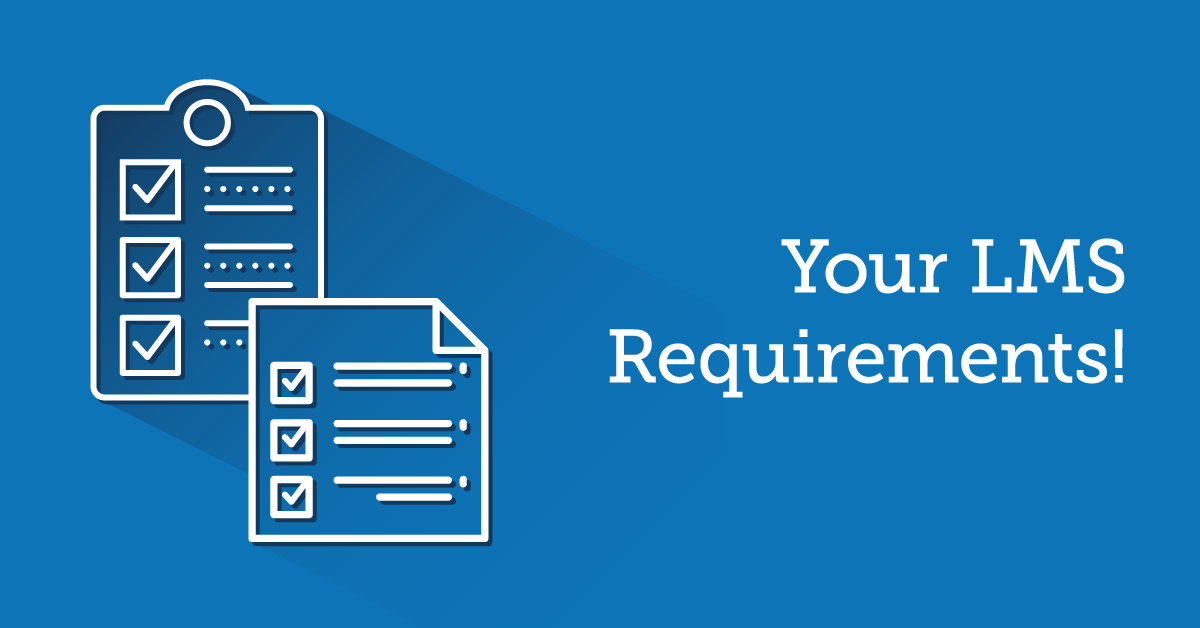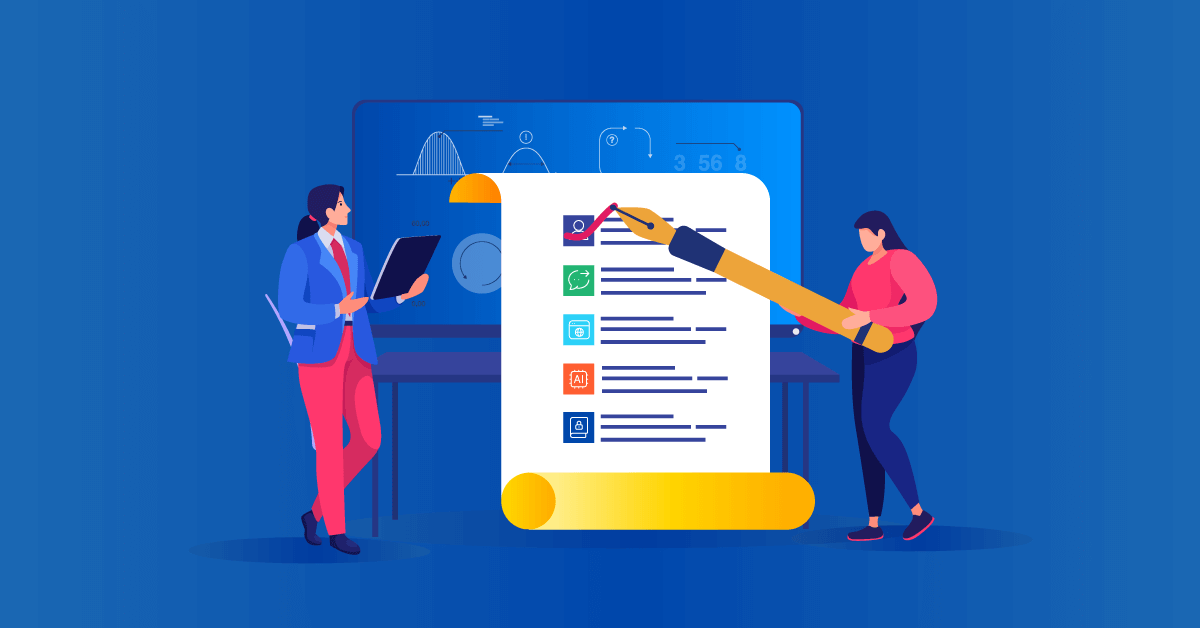You’ve got so many difficult decisions to make in a day. Like how best to allocate your training budget, who to promote, and what development strategy to employ. Now, choosing the LMS that will suit all your training needs has just joined the list. And the worst part is, there are hundreds of them! So, where do you even start?
Well, we’ve got good news. This decision doesn’t need to be overwhelming. Because once you’ve understood your LMS requirements, you’ll know exactly what to look for in this online corporate training tool. And by following a step-by-step process for identifying, prioritizing and selecting the LMS key features that will best support your requirements, your LMS will be the decision you don’t regret.
Following a Selection Process
You wouldn’t hire a marketing manager, just because your colleague said she’s talented (right?). Nor would you purchase a new ERP system, simply because the advertisement said it’s “the best”. No, you’d want to find out for yourself. So, you’d follow a well thought-out selection process in order to make an informed decision, before investing financially into any resource.
Well, as a mighty useful training resource, your LMS selection process shouldn’t be any different.
1) Defining your training needs
Your selection process should start with defining your training needs. This means asking yourself questions like “How often do we need to train?”, “How many employees need training?”, “What kind of training do they need?”, and “What tracking reports do we require as a business?”
2) Identify the LMS features
Once you’ve worked carefully through all of your corporate training requirements, you’ll be able to identify the LMS features that will support them best. For this, you can use an LMS selection checklist (which we’ve sweetly set up for you below).
3) Prioritize them in order of importance
As you work through these features and match them with your corporate training requirements, your next step is to prioritize them in order of importance. For example, tracking reports for training compliance might be a lot more important to your business than eCommerce functionality.
Your LMS Requirements Checklist
How to use the checklist? We’ve taken an overwhelming list of LMS key features and grouped them into simple categories based on your requirements. Consider how each feature would support your training and LMS requirements, and then prioritize them according to how important they are for your training needs.
Provider Requirements
While there are hundreds of LMS providers out there (more than 600, in fact), don’t be fooled into thinking that they’re all the same. Some providers are more established than others and have more experience, others are more affordable, and almost all operate in their own unique way. It all depends on what you’re looking for.
Many LMS providers still provide on-premise solutions, but more and more solutions are also being offered as cloud-based. This can offer loads of helpful benefits, like improved accessibility, and lower startup and maintenance costs.
Then, depending on your LMS requirements for frequency and volume of training, you might prefer a provider who offers monthly or annual licensing, as opposed to user subscription fees.
And last, but definitely not least, you’ll want to find a provider with a reputation for security and privacy, and that will be able to backup your eLearning content and reports. With all the hard work and investment that goes into training development, your eLearning courses and results are not something you’ll be excited to start over again.
Design Requirements
Once you’ve found a good fit with a few LMS providers, the next step is to start thinking about the LMS requirements that will enable you to design the eLearning courses best suited to your training needs. This has everything to do with creating online training specific to your intended audience, your learning objectives, and your training style.
The kinds of features you might require could be:
- Customization tools and a wide variety of themes
- Design tools that incorporate multimedia (like videos and graphics)
- Integrations with services like GoToMeeting
- Subtitles and different language capabilities
- Easy modification, addition and updating capabilities
- A variety of assessment tools, like quizzes, tests, and surveys
Of course, it would be great to have all of the above. But when it comes to making cost-effective decisions, you’ll need to take a hard look at what you really need, and what would just be ‘nice to have’.
For example, the strong assessment of knowledge recall and application might be critical for your training… but you might only ever need them in English.
User-experience Requirements
eLearning courses are designed for one thing – users. And no matter how well designed the course, or how experienced the LMS provider, a poor user-experience WILL stunt learning. This is why it’s important to evaluate how responsive and intuitive the LMS interface is, and to decide whether it’s user-friendly enough for your needs.
Start by taking a step into the shoes of your learners, and asking whether the learning paths will be easy to navigate, how simple it would be to use communication tools like discussion forums, and whether an integrated calendar would assist with planning time for learning activities and assessments.
And, in the technological age we play in, you might also require mobile applications that allow users to learn from an airport lounge, train, the couch at home, or anywhere else they might be. Or, gamification tools might be necessary to create competition and drive learning engagement in the user experience.

Reporting and Feedback Requirements
Everyone requires some level of feedback and reporting on the effectiveness of their training program. The question is just – How much?
Depending on your LMS requirements, features like polls and survey tools can be an easy way to find out what your users thought of their training experience, and how it could be improved. But for many, this isn’t enough.
Tracking reports that provide complete data, graphs and other formats of information can provide useful insights into:
- Course completion rates
- Assessment performance
- Time spent on activities
- Engagement with communication tools
- Compliance training reports
And, of course, all of the above is crucial in determining your training return on investment (ROI).
This information can be available as weekly or monthly emailers. Another functionality allows on-demand report downloads. It all depends on your LMS requirements.
Support Requirements
Okay, so you’ve selected the LMS provider of your dreams, fully equipped with every feature you need to design an engaging course, on a user-friendly platform, with regular and insightful tracking reports. But you’re not finished with the LMS requirements selection process just yet.
You might need some help setting everything up if you’re using an on-premise solution. So unless you’re using a cloud-based LMS (which doesn’t require any setup), make sure that your LMS provider offers implementation training and setup.
And then, once your eLearning course is live, you’re going to want to feel safe in knowing that you’ve got ongoing support. This means readily available customer care through support forums, email, and FAQ documents.
The Choice is Yours
Choosing the right LMS might be one of the most important decisions you’ll make, but it doesn’t have to be the most difficult one. By starting with what your LMS requirements are, and why you need them to achieve your training objectives, you’ll be able to identify the features most important to you.
Plus, if you’re still unsure, you could always sign up for a free trial and see for yourself!



